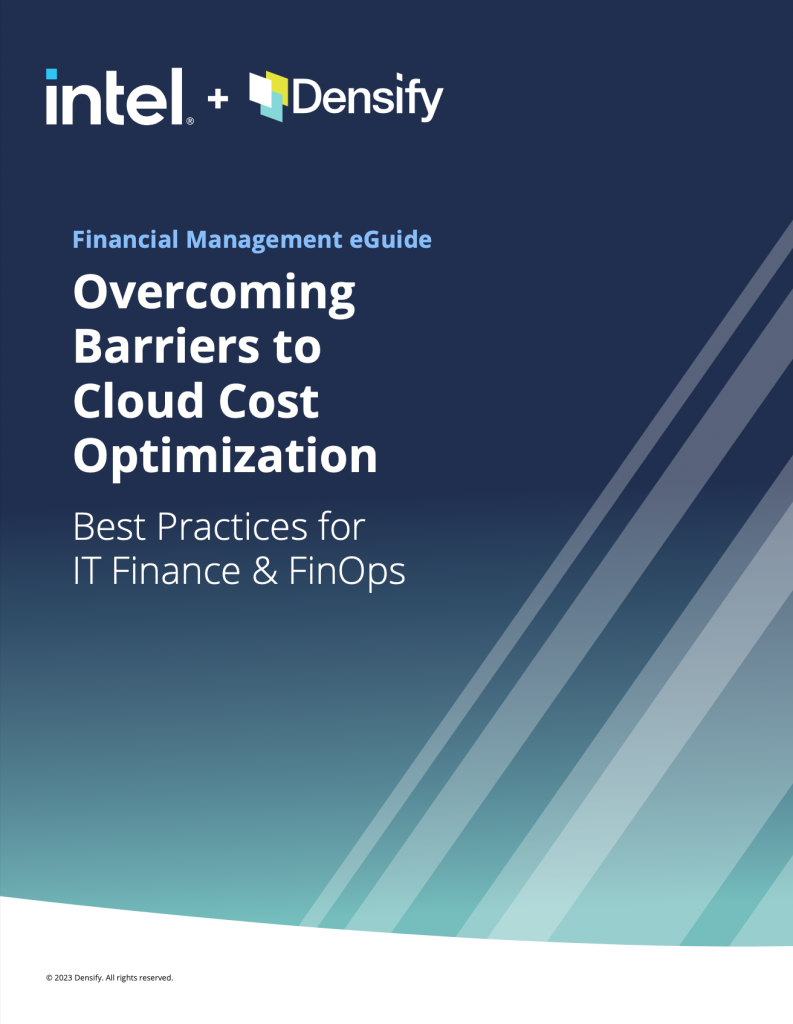Best Practices for Overcoming Barriers to Cloud Cost Optimization
FinOps Guide

Achieve Best-in-Class FinOps
FinOps has become a necessity for enterprises as their cloud and container footprints have grown. But, what sets the most successful organizations apart, and, how do you benchmark your enterprise’s place along its cloud financial management journey?
Download this FinOps Guide and discover how leading organizations are smashing barriers to optimization and guaranteeing the highest cost efficiency in their clouds. You’ll learn:
- How successful enterprises measure FinOps success
- Which behaviors, tactics, processes, and technologies are good indicators that your organization is best in class
- Strategies for overcoming common institutional barriers to cost management
Download the FinOps Guide today!
Download the Guide

Sample Cloud Spending & Cost Efficiency Benchmarks
We have found the following average efficiency achievements across organizations with best-in-class cloud financial management:
| Metric | Description |
|---|---|
| Have reached 98% resource efficiency | Only 2% of spend is wasted against unneeded cloud resources (such as CPU and memory) |
| Match 97% of purchased Reserved Instances hours | Only 3% of purchased Reserved Instance hours are not consumed by properly-targeted running instances |
| Purchase 95% of eligible compute resources through discount plans | Only 5% of running instance hours are not being charged at discounted rates through Savings Plans or Reserved Instances |
What Sets the Best Apart in FinOps Practices & Effectiveness?
We have found that what sets enterprises apart in their cloud cost and financial management is a commitment to working towards:
- Top-down focus on cloud cost optimization
- Integration of systems and processes to bridge Finance, application owners, and Engineering in tactical infrastructure management
- A trust in both process and optimization analytics such that it becomes part of everyday management versus a constant and lonely Finance battle
At the highest levels, we have found these three principles—and the relative level of FinOps sophistication of enterprises exhibiting them—to be evidenced by the following symptoms:
| Area of FinOps Practice | Signs of Lower Sophistication | Signs of Higher Sophistication |
|---|---|---|
| Key Stakeholder Motivation | FinOps is not a top priority | Cloud financial management is taken seriously at senior levels |
| Incentives | No KPIs and no ties to job performance | Performance is measured and results are tied to compensation |
| Transparency & Communication | Information is not available openly | Details and progress shared openly |
| Trust & Collaboration | Cross-functional distrust, fear, or apathy | Lines of business and app stakeholders are bought into optimization changes |
| Provisions for Action | Ad-hoc or best-effort actioning of optimizations | Standard, documented processes for approvals and the actioning of optimizations |
| Automation | Automated processes do not exist or significant manual effort is required | Approvals and actioning of optimizations are a native part of organizational infrastructure management processes |